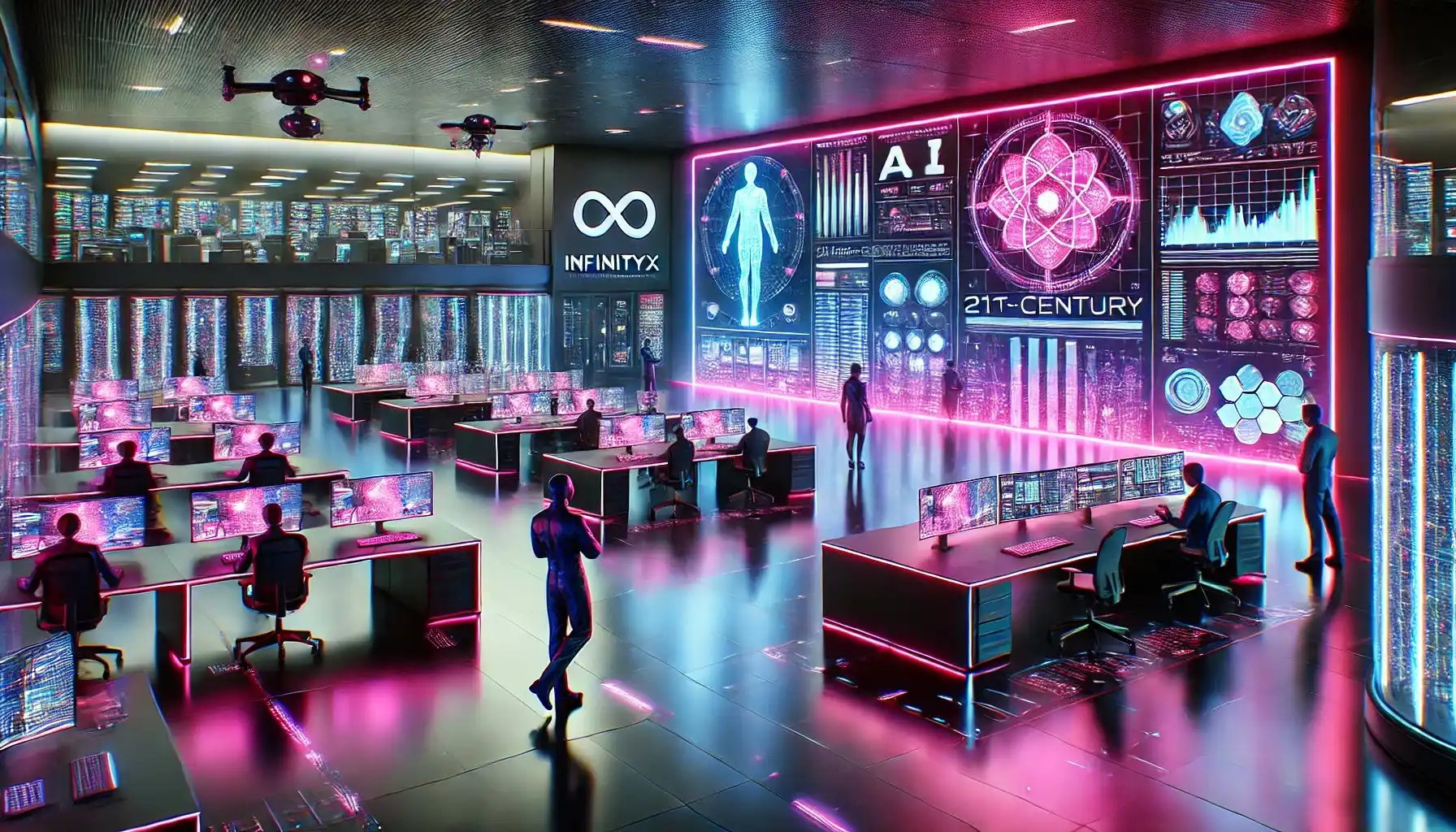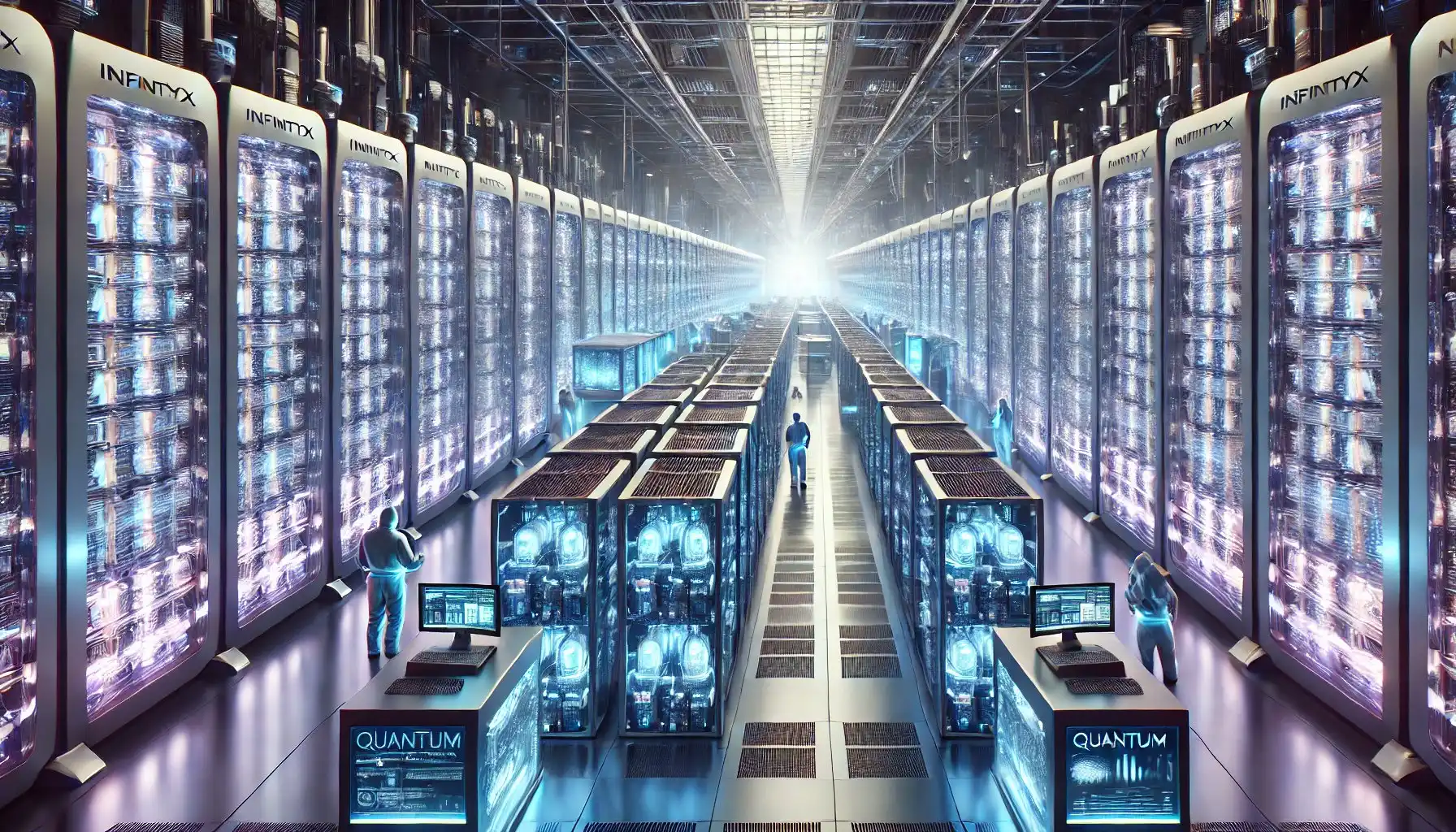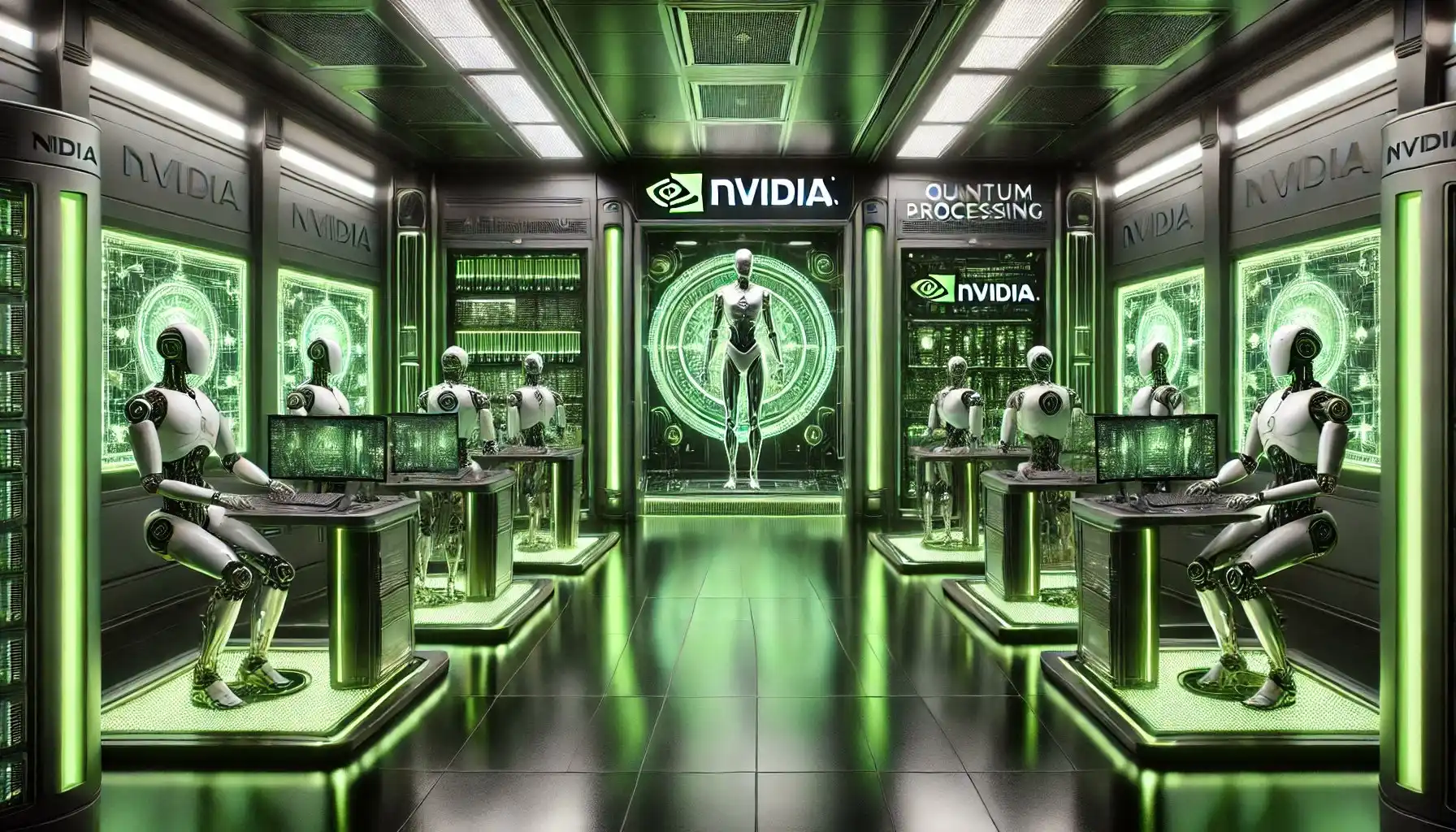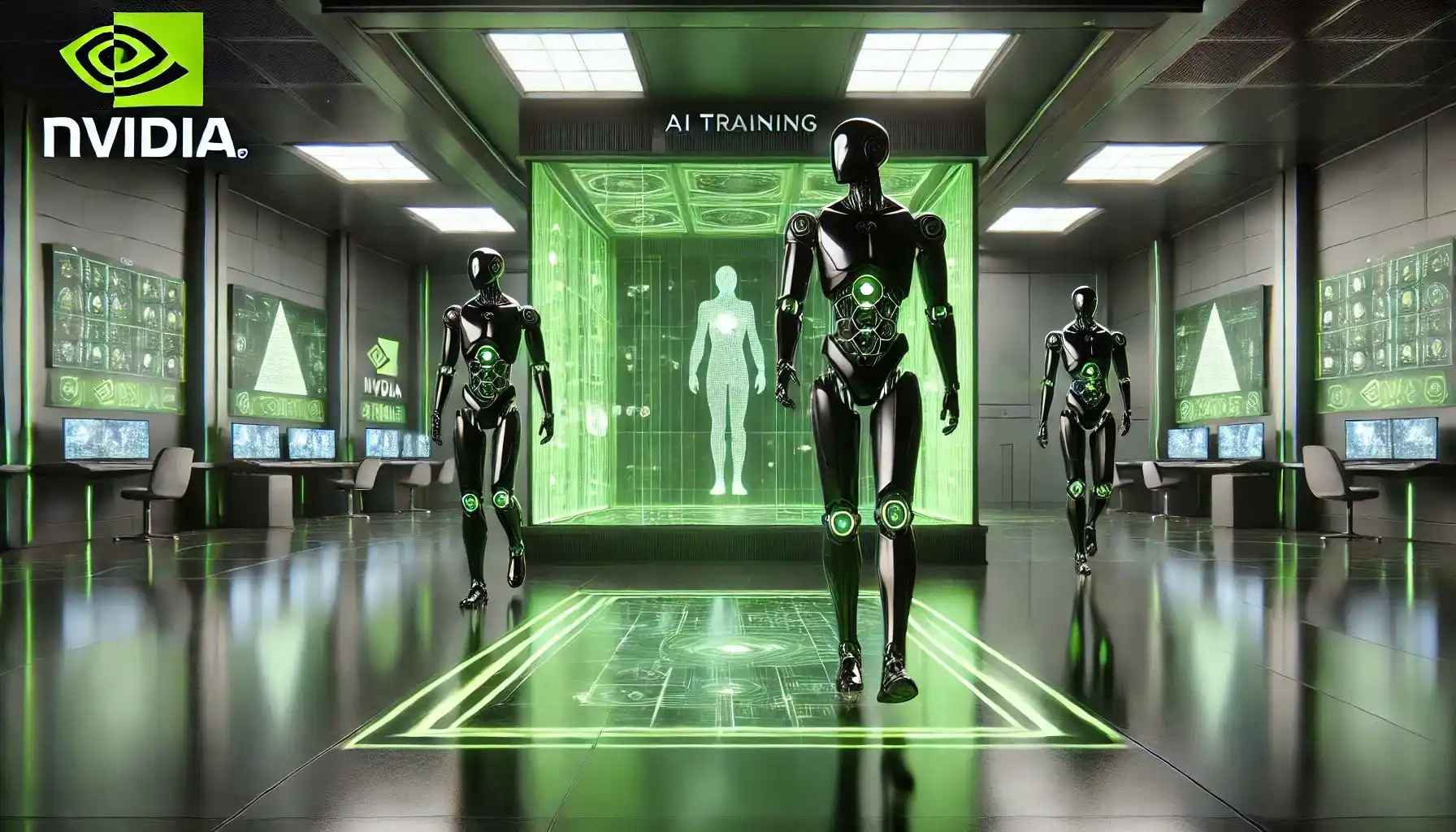Subtitle: “Uniting Quantum and Wafer-Scale AI: Alberta’s Vision for a Smarter, Safer World”
1. EXECUTIVE OVERVIEW
1.1 Visionary Introduction
Picture a massive data-center complex rising in Alberta’s open expanse. Within, thousands of wafer-scale processors and hundreds of quantum “pods” hum with nearly unlimited computational force. This is InfinityX — not just another HPC cluster but a moonshot that merges cutting-edge AI, exascale HPC, and quantum computing under one roof.
1.2 Key Collaborators
-
Google: Quantum R&D (Willow-class qubits), TPU v6/v7 for AI, global cloud infrastructure.
-
NVIDIA: Post-Blackwell wafer-scale GPUs, Grace Hopper CPU-GPU combos, advanced HPC frameworks (CUDA, HPC libraries).
-
Kevin O’Leary & Investors: Access to $70B capital, public advocacy, network of global partners.
-
Alberta (Government & Universities): Abundant energy, cooler climate for data-center cooling, home to AI institutes (e.g., Amii), seeking economic diversification.
1.3 Grand Mission
-
Protect Humanity: Offer HPC + quantum resources to handle worst-case scenarios — planetary defense, catastrophic event modeling, advanced cryptography, the rise of communist dictatorships with advanced AI systems that do not allow free world voting systems (Freedom).
-
Revolutionize AI & HPC: Train trillion-parameter models, perform real-time optimization, deliver quantum leaps in supply-chain or drug discovery.
-
Make Alberta a Global Tech Hub: Create high-value jobs, draw top research talent, and reshape Canada’s standing in the global computing race.
2. BACKGROUND & RATIONALE
2.1 Recap of Prompts & Insights
-
Quantum Willow Chips: Google’s approach to superconducting and/or photonic qubits, rumored to be 1,000+ logical qubits down the road.
-
NVIDIA Blackwell: Next-gen GPUs (GB200 series) already powerful — InfinityX extends beyond by aiming for wafer-scale designs.
-
Comparisons: We weighed InfinityX against top supercomputers (Frontier, Fugaku) and specialized systems like Tesla’s Dojo, concluding InfinityX could be 5 – 50× faster in HPC tasks and offer exponential speedups where quantum applies.
2.2 Technology Gaps
-
Classical HPC Is Nearing Limits: Even exascale systems struggle with certain cryptographic or combinatorial problems.
-
Quantum Integration Largely Missing: Existing supercomputers rarely integrate quantum hardware directly into HPC workflows.
-
Wafer-Scale Potential: While Cerebras has proven wafer-scale AI can work, mainstream HPC still relies on discrete GPUs.
2.3 Opportunity for Alberta
-
Energy Resources: Alberta’s oil/gas plus renewable potential to power large HPC centers.
-
Cool Climate: Reduces immersion cooling costs.
-
Kevin O’Leary’s Involvement: Could catalyze additional public-private partnerships, drawing global attention.
3. TECHNICAL FOUNDATIONS
3.1 Wafer-Scale Accelerators
-
Why Wafer-Scale? Eliminates the overhead of connecting multiple GPUs via external interconnects.
-
Potential ExaFLOP per Wafer in mixed precision for AI training.
-
Challenges: Manufacturing yields at advanced process nodes (3 nm, 2 nm), requiring chiplet or multi-die packaging strategies.
-
ASIC approach specialized for matrix multiplications.
-
3D HBM for tens (or hundreds) of GB of on-chip memory, ensuring sustained, monstrous throughput for ML tasks.
3.2 Quantum Processing Pods
-
Goal: 1,000+ logical qubits with robust error correction.
-
Could handle cryptography, complex optimization, molecular simulations (drug discovery) with exponential speedups.
-
Sealed pods kept at sub-4K temperatures.
-
Upgradeable as quantum fidelity improves or new qubit designs (e.g., photonic) emerge.
3.3 Photonic Interconnect & Fabric
-
Silicon Photonic Switches providing Tb/s to Pb/s bandwidth between nodes.
-
Reduced Latency: Sub-microsecond or even nanosecond-level data transfers.
-
Scalable: Deploy waveguides at rack, row, and facility levels to seamlessly link classical & quantum resources.
3.4 Memory & Storage
-
3D-Stacked HBM on each wafer-scale die (>1 TB/s local bandwidth).
-
CXL 3.0 for disaggregated memory pooling across racks (TB to PB scale).
-
Spanner/Colossus & GPUDirect: Global storage solutions for exabyte-level data, accessible at HPC speeds.
3.5 Cooling & Power
-
Liquid Immersion: Submerge wafer-scale boards in dielectric fluid to maintain stable high performance.
-
Cryostats for quantum pods (4K or sub-4K).
-
Renewables + SMRs: Alberta can harness wind/solar or build small modular reactors for a stable, green energy backbone.
3.6 Software Ecosystem
-
Unified HPC & AI: CUDA-X, TensorFlow, PyTorch, plus quantum frameworks like Cirq or TensorFlow Quantum.
-
AI-Driven Scheduler: Real-time resource allocation across GPUs, TPUs, QPUs. Predicts bottlenecks, optimizes throughput.
-
Security: Post-quantum crypto, zero-trust architecture, hardware security modules.
4. SIDE ISSUES & EXTENDED TOPICS
4.1 Alien Invasion or Existential Threats
-
Advanced Threat Modeling: InfinityX’s massive HPC + quantum synergy can simulate extreme scenarios (planetary defense, unknown cryptographic systems) at unparalleled speed.
-
Beyond Sci-Fi: Prepares for real “black swan” events — far beyond typical HPC planning.
4.2 Next-Gen Google & NVIDIA Chips
-
Post-Blackwell: NVIDIA rumored to be developing new architectures every 2–3 years, possibly wafer-scale or 3D-stacked.
-
TPU v7+: Google similarly pushing higher qubit counts, new memory designs, on-chip photonics.
-
Modular InfinityX: Upgradability to each new generation as soon as it’s available.
4.3 Kevin O’Leary’s $70B
-
Why $16 – $32B Only? Initial build-out includes HPC hardware, quantum pods, data centers, R&D. The rest of Kevin’s capital can fund expansions, or other parallel projects.
-
Investor & Public Advocate: His media presence can drum up excitement, government incentives, and global partnerships.
4.4 Alberta’s Long-Term Vision
-
Tech Ecosystem: AI & quantum R&D labs, spin-off startups, a pipeline of HPC-literate graduates.
-
Energy Transition: HPC centers consume large power — could anchor a shift to renewables or advanced nuclear, fostering new industry growth.
4.5 Risk Management
-
Manufacturing Yields (wafer-scale at advanced nodes).
-
Quantum Error Correction (scaling from tens to thousands of logical qubits).
-
Competitive Arms Race: Other nations or big tech might develop rival HPC + quantum solutions.
-
Regulation: HPC & quantum might face export controls or national security restrictions.
5. COMPARISONS & PERFORMANCE METRICS
5.1 Current Top 5 Supercomputers
-
Frontier, Fugaku, LUMI, Leonardo, Sunway TaihuLight: InfinityX could exceed each by 5 – 50× on classical HPC tasks, with additional quantum advantage for specialized problems.
5.2 Tesla Dojo
-
1 – 2 ExaFLOPS for Dojo vs. 10 – 100+ ExaFLOPS InfinityX aims for.
-
InfinityX’s quantum subsystem yields further leaps, especially in cryptography, optimization, specialized AI workflows.
5.3 Potential for Zettascale
-
Combine wafer-scale & quantum methods to push HPC performance beyond exascale into zettascale for AI or HPC workloads in the next decade, on a continuous rolling upgrade process
6. IMPLEMENTATION ROADMAP
6.1 Phase 1 — Feasibility (12 – 18 Months)
-
Pilot Racks: A small cluster of wafer-scale GPU/TPU tiles + 1 quantum pod.
-
Alpha Software: Integrate Cirq/TensorFlow Quantum with HPC job schedulers, AI-driven resource manager.
-
Budget: $1 – $2B covering pilot hardware & R&D.
6.2 Phase 2 — Pilot SuperPOD (Year 2 – 4)
-
Expand to dozens of racks, multiple quantum pods.
-
Photonic Interconnect at larger scale, advanced immersion cooling.
-
Beta Scheduling: Validating partial quantum advantage on real applications (finance, drug discovery).
-
Budget: Additional $5 – $10B.
6.3 Phase 3 — Production Exascale (Year 4 – 5+)
-
Thousands of wafer-scale GPUs/TPUs + hundreds of quantum pods across multiple data centers.
-
Achieve 10 – 100+ ExaFLOPS classical HPC plus integrated quantum.
-
Global Cloud Integration: Offer HPC + quantum “as-a-service,” possibly via Google Cloud.
-
Budget: $10 – $20B+ final push. Total ~$16 – $32B.
6.4 Ongoing Upgrades
-
Next-Gen Pods: Swap in superior qubits or bigger wafer-scale tiles as they appear.
-
Continual enhancements in photonic interconnect, memory standards (CXL 4.0?), advanced cooling strategies.
7. ECONOMIC & SOCIETAL IMPACT
7.1 Job Creation & Academic Partnerships
-
Thousands of roles for HPC engineers, quantum researchers, data-center operators, AI scientists, new startups.
-
Universities can build HPC/quantum curricula, funneling top-tier talent into InfinityX.
7.2 Global Leadership for Canada
-
Alberta becomes a key HPC & quantum node for international research alliances, drawing attention from biotech, finance, and defense industries worldwide.
7.3 Environmental Implications
-
Large HPC power demands, but offset with immersion cooling and renewable sources.
-
Potential breakthroughs in HPC power efficiency that ripple out to other data centers globally.
8. GOVERNANCE & FUNDING MODEL
8.1 Consortium Approach
-
Kevin O’Leary: Core private funding and public advocacy.
-
Alberta Government: Land, infrastructure, and potential R&D subsidies.
-
Google & NVIDIA: Contribute hardware design, software frameworks, possibly share IP or revenue from HPC-as-a-service.
8.2 Budget & ROI
-
$16 – $32B initial capital outlay for Phase 1 – 3.
-
Monetization channels: HPC cloud services (energy, finance, biotech), advanced AI model licensing, quantum problem-solving services.
8.3 Regulatory & Security Framework
-
Must comply with export controls on HPC & quantum, secure data governance (healthcare, finance).
-
InfinityX 5-Cluster Zettascale Constellation InfinityX is no mere single supercomputer; it’s a unified constellation of five zettascale-class HPC–quantum superclusters spread across Germany (Dr. Alice Weidel), Italy (Georgia Meloni/Vatican City), the UK (Nigel Farage), Alberta/Canada (Kevin O’Leary, Danielle Smith), and the U.S. (Trump, Hegseth, Pentagon). Each node is capable of rollout expansion towards 1+ zettaFLOPS on its own, creating a combined capacity of 5 zettaFLOPS+ when fully networked — an unprecedented leap beyond exascale. By seamlessly integrating data streams from all participating NATO nations, InfinityX can synthesize and process intelligence from every corner of these allied regions in real time, driving quantum-accelerated threat detection, encryption, and strategic simulations at scales previously unthinkable.
-
Under a ‘defense-as-a-service’ model, each cluster remains funded and operated by its respective regional partners, yet collaborates continuously with the other four, ensuring that breakthroughs —whether in AI, cryptography, or large-scale problem-solving — are instantly disseminated across the entire network. In so doing, InfinityX offers 5× the resilience, 5× the innovation, and 5× the defensive coverage — a formidable, cooperative powerhouse that not only safeguards global security but also amplifies research, development, and discovery for the entire alliance.
-
Note: Team SGT needs access to this Constellation to build USS Enterprise (NCC-1701-E).
9. CONCLUSION & CALL TO ARMS
9.1 Restating the Grand Purpose
-
Shield humanity from existential threats, real or hypothetical.
-
Accelerate breakthroughs in climate, healthcare, cryptography, and beyond.
-
Transform Alberta into a global tech magnet, shifting Canada’s economy into the future.
9.2 Immediate Action Steps
-
Form the Consortium: Kevin O’Leary, Alberta gov’t, Google, NVIDIA, academic & private partners.
-
Secure Pilot Funding: $1 – $2B to build initial racks, quantum pods, software integration.
-
Site Selection & Energy Deals: Identify ideal location with renewable or SMR potential.
-
Recruit World-Class Talent: HPC engineers, quantum physicists, AI framework devs.
9.3 Vision
InfinityX stands to be the most audacious computing project on Earth, echoing the ambition of the Apollo program or the Manhattan Project — but for the digital, AI-driven age. By bridging classical HPC with quantum leaps, InfinityX could re-write our understanding of what’s solvable and unify humanity behind a singular, massively powerful engine of problem-solving.
“In building InfinityX, we do more than secure data or accelerate computations — we redefine our place in a rapidly changing world, ensuring that tomorrow’s biggest challenges will never outpace our capacity to solve them.”
Every angle is covered: HPC hardware breakthroughs, quantum synergy, alien defense capability against foreign influence/subversion, Kevin O’Leary’s $70B potential, Alberta’s strategic positioning, competitor comparisons, and step-by-step project phases. All stakeholders — investors, engineers, policymakers, the public — can now see the immense value and vision behind InfinityX.
Appendix: Benefits
1. Robotics & Industrial Automation
-
Generative Robot Design: Use large-scale AI to iterate on mechanical designs, optimizing form and function (e.g., humanoid, legged, or specialized industrial robots).
-
Digital Twins of Factories: Create high-fidelity simulations of entire manufacturing lines to test, refine, and automate processes in virtual space before real-world deployment.
-
Human-Robot Collaboration: Enable next-level collaborative robots (cobots) that adapt to human co-workers in real time.
2. Aerospace & Advanced Vehicles
-
High-Fidelity Aerodynamics (CFD): Harness exa-scale computing + quantum methods for unparalleled fluid dynamics simulations to improve aircraft, drone, and spacecraft designs.
-
Autonomous Flight Systems: Train AI autopilots that handle air-traffic, combat, or emergency scenarios with real-time adaptability and reliability.
-
Space Exploration: Model orbital trajectories at massive scale; design next-gen propulsion (e.g., scramjets, ion drives) with quantum-classical optimization.
3. Maritime & Naval Engineering
-
Ship/Submarine Design: Employ advanced simulations for hydrodynamics, hull shape optimization, and new materials to reduce drag and improve structural strength.
-
Autonomous Maritime Systems: Develop AI-driven navigation, collision avoidance, and resource exploration (e.g., undersea mining or environmental monitoring).
4. Energy & Advanced Nuclear/Fusion
-
Fusion Reactor Modeling: Combine HPC + quantum to simulate plasma physics, magnetic confinement, and materials at extreme conditions, accelerating fusion research.
-
Renewable Grid Optimization: Optimize wind, solar, hydro, and storage solutions at national or continental scales, factoring in real-time weather and consumption data.
-
Small Modular Reactors (SMRs): Use AI to design safer and more efficient reactor cores, coolant systems, and control algorithms.
5. Nanotechnology & Materials Science
-
Atomistic Simulations: Leverage quantum-assisted modeling for new alloys, nanomaterials, or metamaterials.
-
Smart Surfaces & Coatings: Design self-healing or self-cleaning surfaces for aerospace, automotive, or medical applications.
-
Targeted Manufacturing: Integrate HPC-driven nano-assembly techniques for next-gen electronics or advanced sensor systems.
6. Brain-Computer Interfaces (BCI) & Neuroscience
-
Real-Time Neural Decoding: Analyze high-bandwidth brain signals, enabling advanced prosthetics or fully immersive VR experiences.
-
Precision Neuromodulation: Use AI to discover optimized stimulation patterns for treating neurological conditions (e.g., Parkinson’s, epilepsy).
-
Cognitive Modeling: Simulate large-scale neural networks to study consciousness, memory formation, and novel learning paradigms.
7. VR/AR & Immersive Technologies
-
Ultra-Realistic Rendering: Render fully immersive simulations at low latency with exascale AI hardware — potentially enabling “holodeck-level” realism.
-
Real-Time Translation & Interaction: Provide on-the-fly language translation, gesture recognition, and environment scanning for collaborative AR spaces (e.g., remote surgery or manufacturing).
-
Training & Education: Use high-fidelity virtual environments to train specialists (pilots, surgeons, engineers) on complex tasks.
8. Synthetic Biology & Regenerative Medicine
-
AI-Guided Genome Editing: Speed up CRISPR-based interventions, discovering gene combinations for disease resistance or targeted therapies.
-
Tissue Engineering: Simulate and optimize tissue growth conditions, scaffold designs, and bioreactors for organ printing or regenerative medicine.
-
Microbial Factories: Engineer microbes to produce chemicals, fuels, or pharmaceuticals more sustainably (potentially revolutionizing manufacturing).
9. Geoengineering & Climate Intervention
-
High-Resolution Earth System Models: Evaluate large-scale interventions (e.g., cloud seeding, carbon capture, solar radiation management) with robust simulation data.
-
Risk-Benefit Analysis: Quantum-enabled scenario planning for complex climate feedback loops, improving confidence in policy decisions.
-
Biodiversity Modeling: Predict outcomes for ecological interventions by combining HPC climate models with AI-driven species interaction data.
10. Advanced Security & Cryptography
-
Post-Quantum Crypto: Develop new cryptographic schemes resistant to quantum attacks and test them on real quantum hardware.
-
Real-Time Cyber Threat Analysis: Detect and neutralize sophisticated attacks by analyzing global-scale networks and logs in near real time.
-
Quantum-Safe Communications: Implement quantum key distribution (QKD) and other protocols to secure critical infrastructure against future threats.
11. AI Model Training
-
Trillion-Parameter AI Models: Train multi-trillion parameter language models (e.g., GPT-6 or beyond). Push the boundaries of AI with models capable of advanced reasoning, problem-solving, and multi-modal understanding.
-
Foundation Models Across Domains: Build specialized AI models for fields like healthcare, climate science, and materials engineering.
-
Real-Time Model Training: Train models on streaming data in near real-time, enabling dynamic learning and adaptation.
12. Quantum-Enhanced AI
-
Quantum Machine Learning (QML): Use quantum processors for faster optimization of neural networks. Accelerate unsupervised learning and clustering tasks by leveraging quantum speedups.
-
Quantum-Accelerated AI Algorithms: Solve combinatorial optimization problems like the Traveling Salesman Problem (TSP) at unprecedented speeds. Enhance AI for portfolio optimization, logistics, and advanced AI scheduling systems.
13. Scientific Simulations
-
Molecular and Drug Discovery: Use AI to simulate protein folding, accelerate drug discovery, and design new materials. Quantum processors provide an advantage in quantum chemistry simulations.
-
Climate Modeling: Build hyper-accurate climate prediction models using exascale AI and quantum systems to simulate complex environmental interactions.
-
Physics Simulations: Leverage hybrid quantum-classical AI to explore high-energy physics and cosmology.
14. Real-Time Decision-Making Systems
-
Autonomous Systems: Enable self-driving cars, drones, and robotics to make real-time decisions in complex environments. Process sensor data and adapt dynamically using hybrid AI.
-
Defense and National Security: Power military systems for threat detection, decision-making, and unmanned combat vehicles. Real-time battlefield simulations and strategic AI planning.
-
Healthcare Diagnostics: Provide instant diagnostics using AI trained on massive, multimodal datasets (e.g., imaging, genomics).
15. Artificial General Intelligence (AGI) Exploration & Development
-
Multimodal AI: Integrate vision, language, and reasoning to create AI systems capable of human-like understanding. Develop AGI frameworks capable of tackling open-ended problems and self-improvement.
-
Creative AI: Train AI for art, music, and storytelling at a level indistinguishable from human creators.
16. Hyper-Personalized AI
-
Personal Digital Assistants: Power virtual assistants with advanced personalization, learning from an individual’s preferences, habits, and data streams.
-
AI Tutors and Coaches: Deliver AI-driven education tailored to individual learning styles and needs.
17. Advanced AI Inference
-
Global-Scale Inference Systems: Support billions of real-time AI requests (e.g., search, recommendations, translation). Achieve ultra-low latency with energy-efficient TPUs.
-
Edge AI Support: Provide edge devices with AI-optimized inference models, offloading heavy computations to the cloud.
18. Large-Scale Optimization
-
Global Logistics: Optimize supply chains, transportation networks, and resource allocation with quantum-classical AI.
-
Smart Cities: Run AI systems for energy optimization, traffic management, and public safety.
19. AI-Driven Research and Development
-
AI-Assisted Scientific Discovery: Collaborate with researchers to propose hypotheses, analyze data, and automate research workflows.
-
AI for Space Exploration: Support AI missions for analyzing planetary data and managing space probes.
20. Beyond AI: Transformational Applications
-
AI-Augmented Quantum Research: Use AI to optimize quantum circuits and explore quantum error correction.
-
AI in Creative Industries: Revolutionize content creation in film, gaming, and media production with hyper-realistic, adaptive AI tools.
-
AI for Crisis Response: Provide rapid, AI-driven insights during natural disasters, pandemics, or economic crises.
Emerging Fields
-
Bioplastics & Green Chemistry: Discover catalytic processes to convert waste into biodegradable plastics.
-
Precision Agriculture: Achieve data-driven agronomy, reduce pesticide use, and improve yields with HPC analytics.
-
Computational Social Science: Model large-scale human behaviour, policy outcomes, or economics with AI-driven agent-based simulations.
-
Smart Infrastructure: Integrate real-time analytics for traffic, power grids, and city services to create more efficient, livable urban environments.
-
Exoskeletons & Prosthetics: Adapt control systems to each user’s biomechanics for safer, more natural movement.
Limitations and Technical Challenges
-
Energy Consumption: The immense computational power demands significant energy optimization to remain sustainable. Balancing renewable energy sources with consistent operational needs is critical.
-
Heat Management: Managing the heat generated by wafer-scale processors, quantum pods, and AI systems requires advanced cooling technologies (e.g., liquid immersion cooling).
-
Manufacturing Yield: Producing wafer-scale GPUs and TPUs with high yields at advanced nodes (e.g., 3 nm, 2 nm) remains challenging.
-
Quantum Error Correction: Scaling from hundreds to thousands of logical qubits while ensuring fidelity and error correction requires breakthroughs in quantum hardware and algorithms.
-
Software Integration: Developing a unified platform to seamlessly integrate AI, HPC, and quantum workflows while ensuring compatibility with emerging technologies.
Security Challenges
-
Nuclear Strike or Missile Attacks: The facility must be hardened against physical attacks, including nuclear or high-impact missile strikes, using underground or fortified structures.
-
EMP Strikes: Protecting against electromagnetic pulses (EMP) with shielded infrastructure and fail-safe mechanisms for critical hardware.
-
Cybersecurity and Subversion: Safeguarding against foreign subversion, hacking, and espionage with advanced zero-trust architecture, quantum encryption, and hardware security modules.
-
Power Supply Disruption: Ensuring uninterrupted power through redundant renewable energy sources, small modular reactors (SMRs), and secure energy storage systems.
-
Natural Disasters: Designing the facility to withstand earthquakes, floods, or other environmental disasters.
Ethical and Operational Risks
-
Ethics and Bias: Addressing potential biases in AI models and ensuring ethical use of AI technologies.
-
Misuse of Technology: Preventing the exploitation of HPC and AI for malicious purposes, such as developing advanced cyberweapons or mass surveillance.
-
Global Arms Race: Navigating geopolitical tensions, where rival nations or corporations may view InfinityX as a threat, sparking competition or sabotage.
-
Data Privacy: Handling massive datasets securely without infringing on user privacy or breaching regulations.
-
Export Controls: Ensuring compliance with international restrictions on HPC and quantum technologies, particularly in sensitive applications like cryptography.
Operational and Long-Term Viability
-
Maintenance and Upgradability: Balancing the cost and feasibility of upgrading hardware and software in a rapidly evolving technological landscape.
-
Talent Pipeline: Attracting and retaining world-class HPC engineers, quantum researchers, and AI scientists to maintain operational excellence.
-
Scalability: Ensuring that the system can expand to meet growing computational demands without diminishing efficiency.
-
Environmental Impact: Minimizing the ecological footprint of a massive HPC center, even with renewable energy and efficient cooling.
-
Global Collaboration: Managing international partnerships and alliances while maintaining national security and competitive advantages.
Conclusion: A Quantum Leap Toward Humanity’s Future
A Call to the Bold
-
For Researchers: Imagine unlocking answers to questions that once seemed unapproachable — modeling weather patterns in real time, tackling the intricacies of quantum chemistry, or simulating entire biospheres at unprecedented resolution.
-
For Industry & Innovators: Envision rapid prototyping of self-driving robots, next-gen aircraft, or carbon-neutral energy grids, powered by a platform that can run millions of design iterations in days, not years.
-
For Governments & Society: Picture a strategic asset — one that supports national security, shields against cyber threats, and safeguards critical infrastructure with quantum-safe cryptography. InfinityX is a digital firewall protecting freedom and democracy against adversaries wielding advanced AI.
A Catalyst for Hope & Progress
-
Faster drug discovery to combat pandemics.
-
Better climate models to mitigate environmental crises.
-
Secure communications in an age of growing cyber warfare.
-
Vast economic opportunities, from job creation to global R&D partnerships that can redefine entire industries.
The Time Is Now
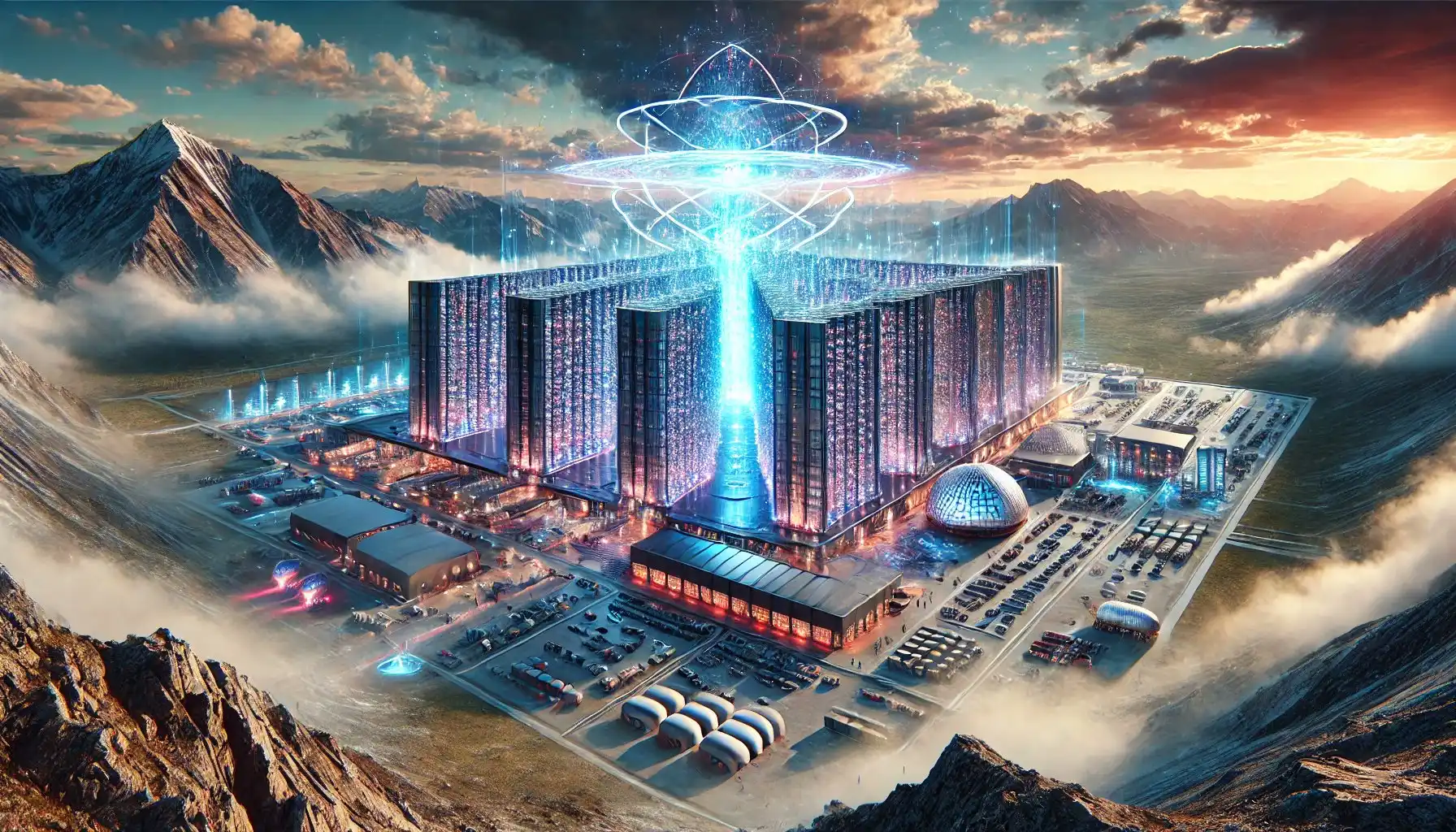
Related Content:
Title: “Saving Canada: The Polaris Plan & the Case for a CanAm Economic Alliance” https://x.com/SkillsGapTrain/status/1873045533306102062
Title: “Alberta’s Success: A Reflection of Resource Strength & Leadership Traits?” https://x.com/SkillsGapTrain/status/1872967052283048090
Title: “Polaris Ascendant: Forging the CANZUK-USA Alliance Through the Age of Stars” https://x.com/SkillsGapTrain/status/1872410272419520935
Title: “Canada’s Social Contract: Preserving Rights, Freedoms, and Sovereignty in the 21st Century” https://x.com/SkillsGapTrain/status/1872197061824618624
Title: “Polaris Eternum: Forging Canada’s Leadership in the Arctic Age” https://x.com/SkillsGapTrain/status/1871880916693328320
Title: “Blue Storm Rising: A Canada-Wide Industrial Renaissance” https://x.com/SkillsGapTrain/status/1870617009823613062
Title: “Blue Storm Rising” Master Report: “A Comprehensive Framework for Alberta’s Industrial Miracle” https://x.com/SkillsGapTrain/status/1870763227300155891
Title: “Freedom Is the Heart of Canada’s Value — Don’t Let It Be Undermined”https://x.com/SkillsGapTrain/status/1870327584019317156
Title: “Project PHOENIX: A Blueprint for Civilizational Resilience & Ethical Rebirth”https://x.com/SkillsGapTrain/status/1867830073694290401
Title: “Blue Storm Rising: The Quiet Force Within“https://x.com/SkillsGapTrain/status/1862255032697045310
SGT Tech Design Page:https://skillsgaptrainer.com/category/creative-skills-mastering-the-digital-craft/
SGT Military Page:https://skillsgaptrainer.com/category/military-science/
To see our Donate Page, click https://skillsgaptrainer.com/donate
To see our YouTube Channel, click https://www.youtube.com/@skillsgaptrainer
